Art Study Resources for Students
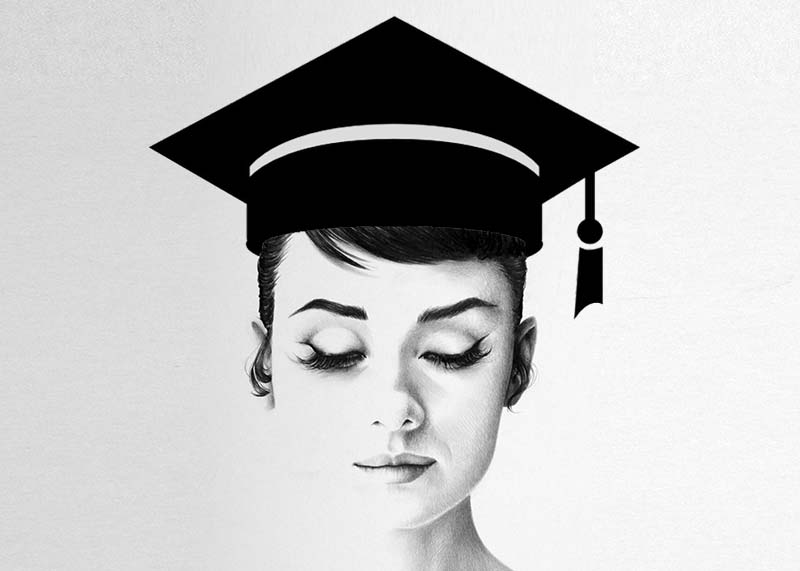
Every year – for quite a few years now – I get lots of emails from GCSE and A level students who are doing coursework or writing papers about my work – mostly here in the U.K., sometimes abroad. Now my own kids are growing up and I have a bit more time, let me mother hen you properly and collect a few useful resources.
I'll start off with an overview of the tools I use. Then a list of questions I was sent by a student. Finally, I have included a selection of works done by students that they have sent to me.
If you are reading this and would like other questions answered then drop me a message in the comments (or via my contact page), or send me your own artworks to add to the gallery, I’ll add to this blog post and hopefully it’ll be a lot more helpful by the time we’re done.
Article contents:
My Drawing Tools
Here is an overview of the tools of my trade. From my everyday drawing essentials, to the niche items I use only sparingly for specific tasks. (I'm not making money from the links below, by the way – just trying to be helpful).
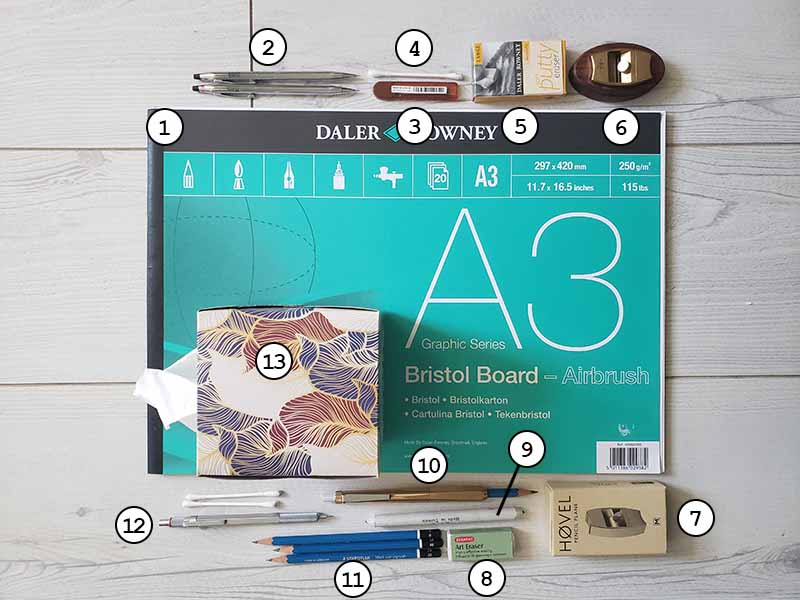
- The all important tabula rasa. Paper: needs to be as white as the snow on the Jungfrau. I only use extra smooth Bristol board from Daler Rowney.
- My favourite mechanical pencils are Cross Classic Century. One is my baseline B, the one crudely marked with red sharpie is a 2B. They feel lovely to hold, are beautiful quality and I’ve had them since 2006.
- Some all important 4B 0.5 leads from Staedtler. Harder to find than lighter ones, but crucial for small dark details such as eyelashes.
- The humble cotton bud. I’ve tried all the fancy blending implements, this is perfect in so many ways. Top tip: if you are after soft blending, fluff up your cotton bud tip.
- Putty eraser. I don’t use it a lot, as it does leave residue on paper, which makes it hard – if not impossible – to draw on top. I break little portions off, fashion them into a little pyramid shape and use the tip for those rare times I draw skin texture and I need pores.
- This jewel like pencil sharpener is from Makers Cabinet and is a dream to own and use.
- And that’s the box it came in, I like to keep it safe and also it is very dear to me as it was a Christmas present from my boyfriend, hello Rassam.
- Derwent Art Eraser – does what it says on the tin. NB: I barely ever use it in its original shape. Rather, I cut it into little sharp triangles with a craft knife and use it for details such as windswept light hair strands.
- Blending stump. Pretty useless, as it smudges paper to hell and is impossible to undo. Still, one for when I feel confident and supernaturally light handed.
- Super fancy pencil extender from Makers Cabinet. For those little stumps you can’t hold in your hand any more without consistently touching your paper with potentially grubby hands. This will elevate your dying pencil to the heights of its youth.
- Mars Lumograph from Staedtler, from HB and B all the way to 8B. Such great quality. They’ve been with me along every art journey and I’m inordinately attached.
- My Rotring 600 mechanical pencil. Knurled grip, with an actual lead harness indicator. This is reserved for those 4Bs I was going on about at #3.
- Tesco Tissue cube. I like how soft and thin this is, perfect for wrapping around my finger tip and achieving some of the softest blending in the world.
Student Q&A
Q. Could you tell me a little bit about yourself, like when and where you were born and where you live now?
A. I was born in Bucharest, Romania in 1982 and I now live in Norwich, U.K. with my 2 children and own overactive brain.
Q. Did you go to an art school? If you did what school and how did you decide to attend?
A. No, I’ve never taken an art class.
Q. Was there another career that you were interested in before becoming an artist?
A. I have a Master’s Degree in Psychology and was fully intent on pursuing a career in the field until I picked up a pencil one day and decided to draw a portrait to relieve the stress of university exams. It was the ‘coup de foudre’ one reads about in cheap romance books. Except you can fall in love with things other than people, it would seem.
Q. What is the most difficult part of transitioning from school to an actual job?
A. The transition itself is the hardest step, and likely proves insurmountable for many artists without a lot of support, even more hard work and absolute confidence in oneself. I had a couple of lean years, building skills, a client base and a good reputation, but there was a lot of brilliant light at the end of that tunnel.
Q. Besides doing unique portraits are there any other forms of art you like to do in your free time?
A. I sometimes do still life and nudes, but quite rarely. My true passion is for portraiture.
Q. How would you describe your art and style?
A. A contradiction. Simple and highly detailed. Concise.
Q. What is the meaning of 'Fragments'?
A. The Fragments series is about masks and persoanae, roles we play in society, how much or how little we allow other people to see of our authentic selves. Ultimately part of my journey of self discovery.
Q. Who are your artistic influences?
A. I am naturally interested in all great portrait artists, but I couldn’t name a single favourite or identify influencing factors. I’ve always refused to intellectualise and done the things which came naturally, as an extension of my personality.
Q. Do you have any companies buying your portraits?
A. Yes, mainly interior design, and I also accept quite a few offers from publishing houses for book covers.
Q. Do you find social media helps getting your name and skills out to the public?
A. Absolutely. My first foray into social media was Deviant Art around 2007-2008. Quite a nerve wracking step, offering your work to the world to be loved, hated and every nuance in between, but it was an excellent decision.
Q. What are the most rewarding and the most difficult parts of being a professional artist?
It is a lonely job, and not always the best paid, but the reward is happiness itself.
Q. Lastly do you have any advice to a student pursuing art as a career?
A. Believe in yourself. Work tirelessly. And I’ll leave you with a quote from Jean Cocteau which I’ve personally found very insightful and poignant: “Listen carefully to first criticisms made of your work. Note just what it is about your work that critics don't like…then cultivate it. That's the only part of your work that's individual and worth keeping. What the public criticizes in you, cultivate. It is you.”
Student Artwork Gallery
Arty Teacher Resources
The Arty Teacher provides teaching resources for art teachers. She recently interviewed me about my work and life which covers information and advice for budding young artists. She has also created a presentation pack and other resources aimed at teaching/learning about my art style.
If you have a suggestion for other resources I can add to this article or you would like to send me your student artwork to be featured on this page, then please leave a comment below, message me via the contact page, or email me at [email protected].



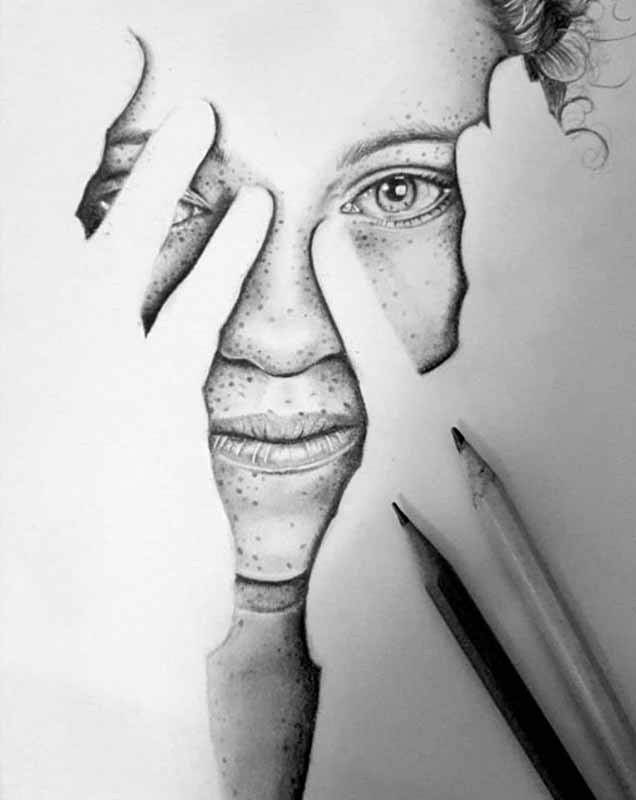

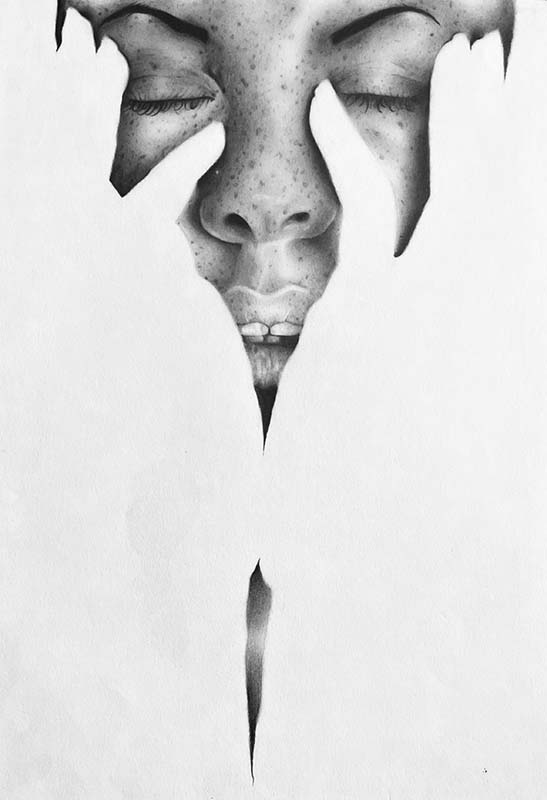





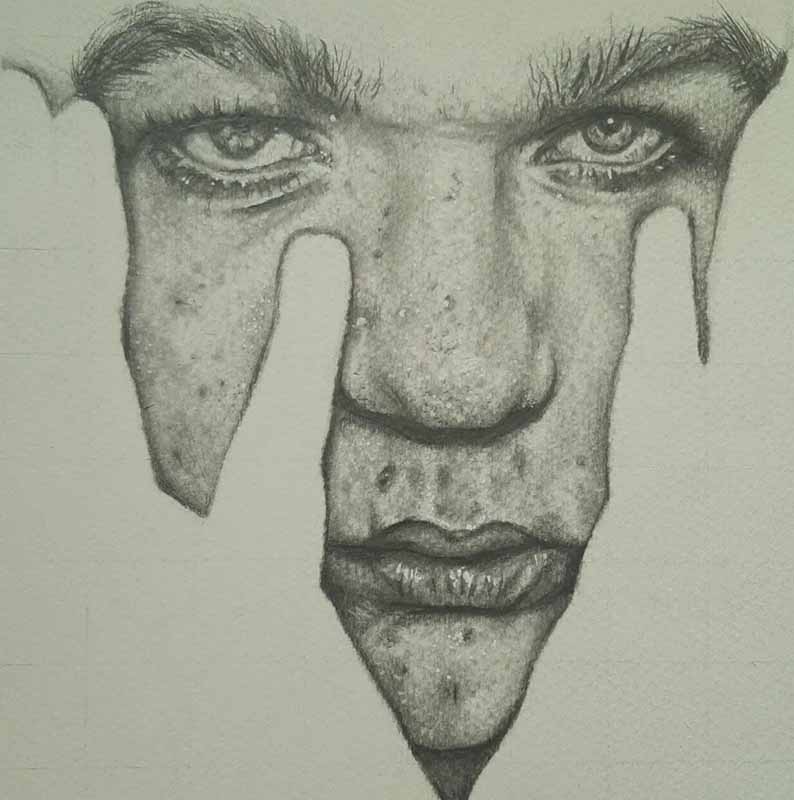
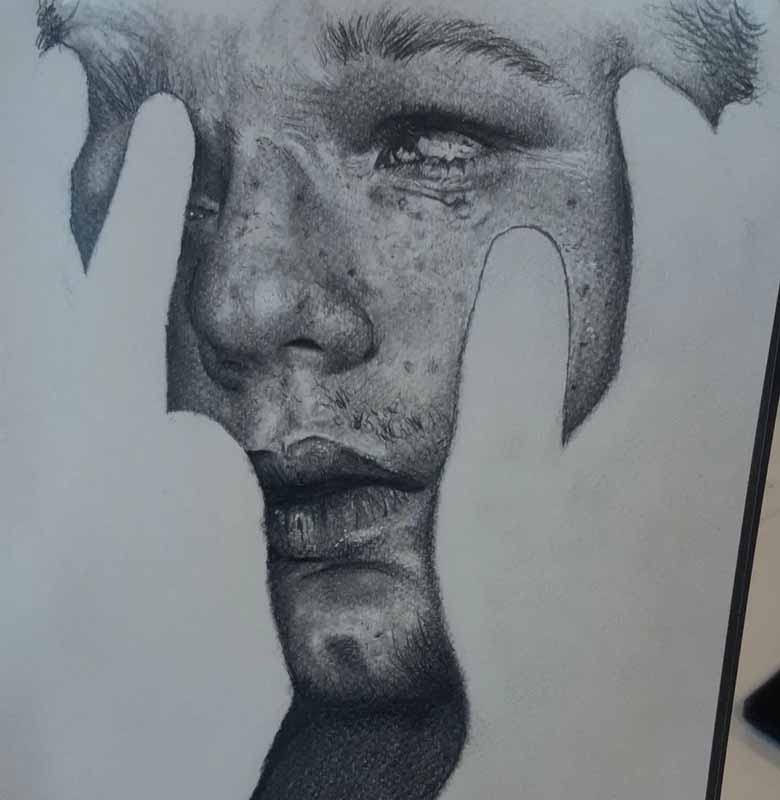


Do you also work in color, by using oil paint, acrylic paint, colored, pencil, pastel pencils, or oil pastels?
Hi Thomas, I’m afraid it’s all monochrome graphite for me.
Do you use the graph method to draw your portraits, or do you simply “eyeball” it? Thanks!